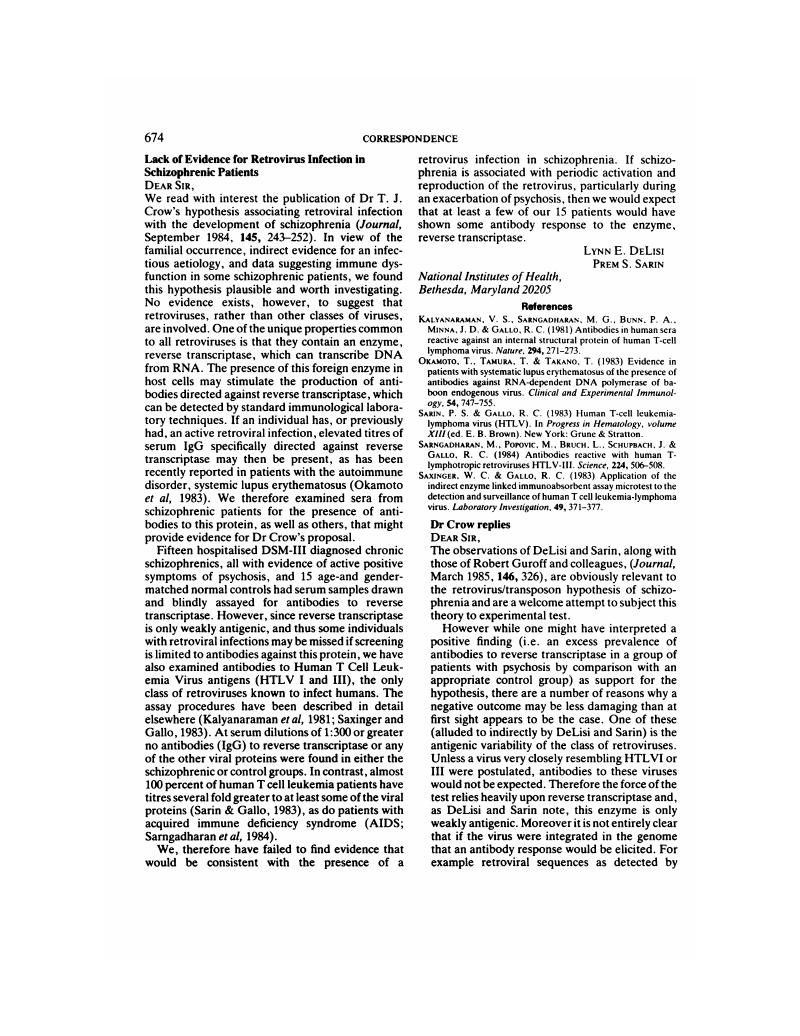Crossref Citations
This article has been cited by the following publications. This list is generated based on data provided by Crossref.
Feenstra, Anita
Kirch, Darrell G.
Bracha, H.Stefan
and
Wyatt, Richard Jed
1989.
Lack of evidence for a role of T-cell-associated retroviruses as an etiology of schizophrenia.
Biological Psychiatry,
Vol. 25,
Issue. 4,
p.
421.
Feenstra, Anita
Kirch, Darrell G.
Coggiano, Mark A.
and
Wyatt, Richard Jed
1991.
Psychiatry and Biological Factors.
p.
149.






eLetters
No eLetters have been published for this article.